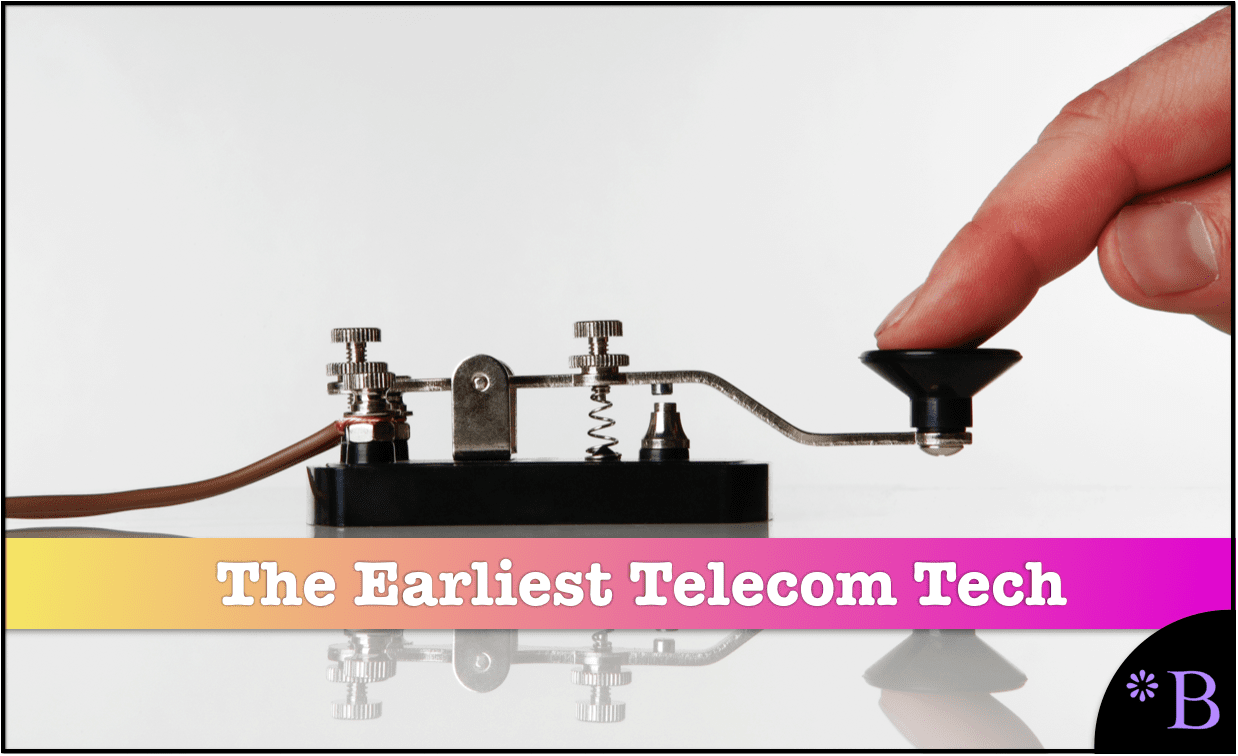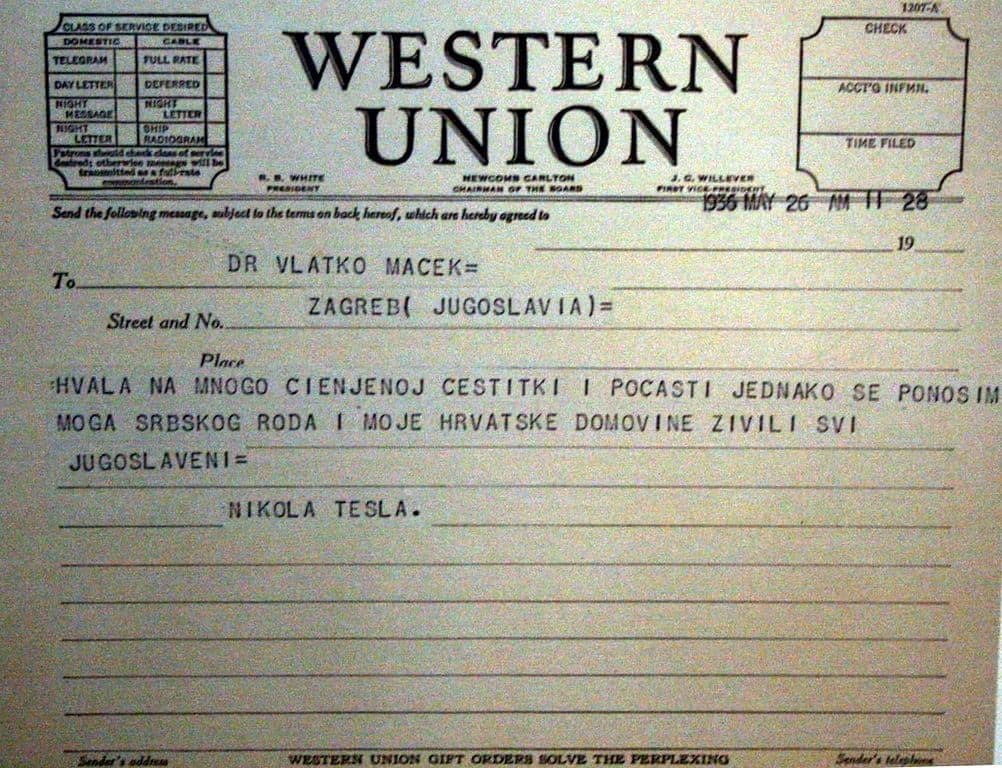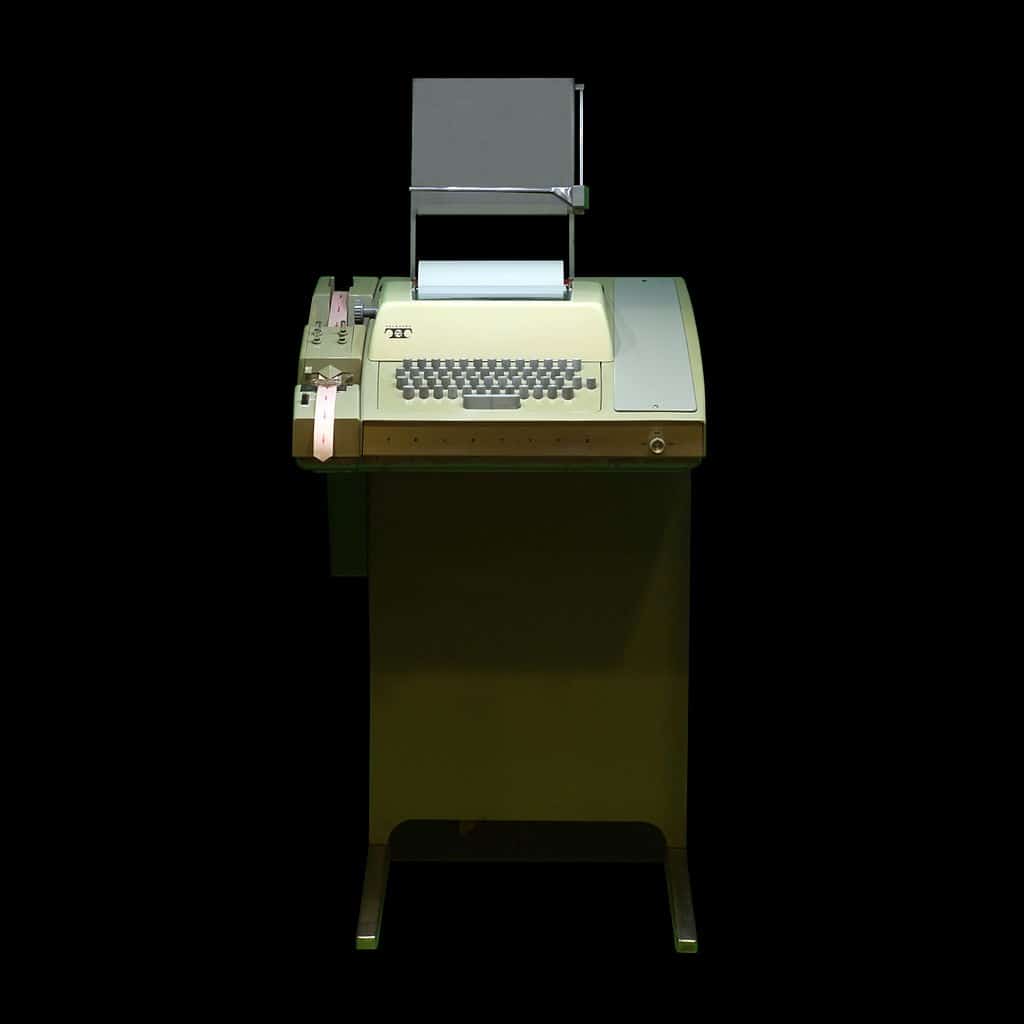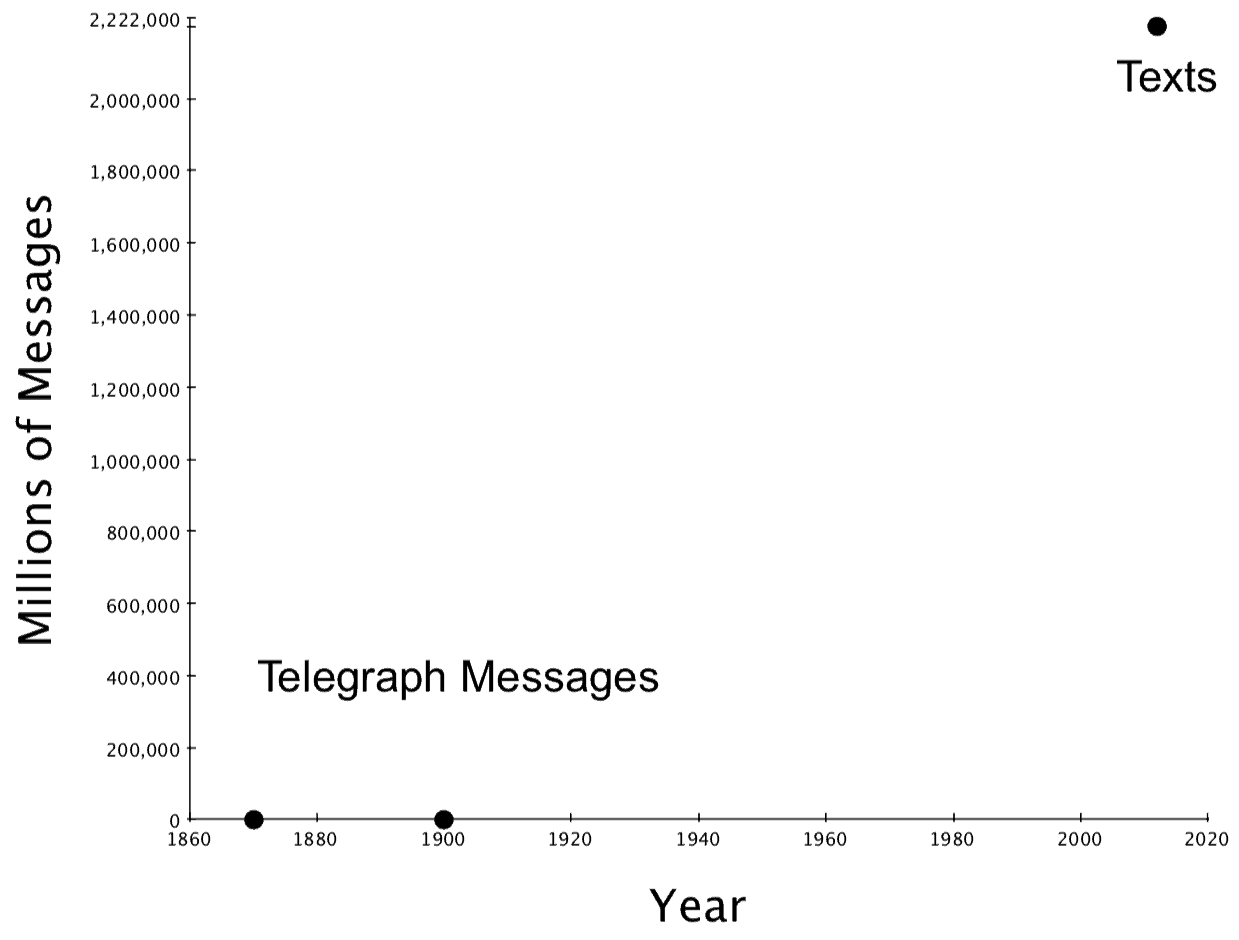How to Understand The Telegraph and Telex in the History of Supply Chain
Executive Summary
- The telegraph, telex, and postal system have essential implications in the history of the supply chain.
- We cover how these technologies changed the supply chain.

Introduction to Earliest Technologies
The supply chain has always interacted with the communication technologies of the day. In today’s instant information environment from a distance, it is interesting to consider that this is quite a recent phenomenon. In particular, transferring the type of a large amount of information necessary for communicating things like stock positions or purchase orders is only a few decades old. The early development of messages at a distance that stretches back to the 1830s was still quite expensive, even by 1900. Therefore, the information sent was either news or relatively small-sized messages.
Postal Systems
Electronic telecommunication is a relatively recent development. Depending upon when to use it as a start date, electronic telecommunication goes back roughly 160 years. It was not used to communicate very much information until approximately 100 years ago. This means that when messages were sent between entities for almost all human history, they were letters carried by people, horses, horse-drawn carriages, or ships. Letters are primarily obsolete for correspondence on supply chain topics, except for very specialized applications.
The First Courier System
Egyptians are thought to have developed the first courier system, with the Persians developing the first formalized postal system. The first large-scale mail system was developed by the Mongolian Empire, which had 1400 postal stations in China alone.[1] These were not the types of postal stations we would recognize today where the public would drop off packages and buy stamps. Instead, they were primarily military installations. This is one of the problems in analyzing when the first system was developed that private entities could use because the early systems were controlled and used by royalty and the military. These societies were not thinking then, “Wouldn’t it be a good thing if ordinary peasants could transmit messages to one another.” Secondly, many postal systems were unlike modern ones in that mail could only be sent within a limited network. For instance, some religions, as did universities, had their own postal service.
Many of the conveniences that we take for granted today are less than two hundred years old. These developments include simpler ways of charging for mail and packages to be sent. As with other telecommunication methods, postal systems began to be used by the well-off and had limited geographic scope. Eventually, they became more broadly used and increased the distance that it could be sent.
Postal systems have a symbiotic relationship with the development of transportation technologies covered in Chapter 3: Technologies in the Supply Network. Mail went from being carried by horse-drawn carriages to the rail to the airplanes and trucks.
The Telegraph
It’s easy to think back to how simple the telegraph was and how little in the way of information it could carry. However, when one thinks of what it replaced, the telegraph was a boon to distance communication. The telegraph was not the first communication at-a-distance technology used by humans, as lighthouses and other visible communication types (smoke signals, for example) had existed for thousands of years. Ocean-going Transportation made particular use of visual telegraphy techniques called the semaphore. Semaphore systems often had to be in a chain to communicate any distance. If you have seen the Lord of the Rings movies, there is a scene where men on successive mountain tops light a fire, eventually communicating a message over a great distance. This was a semaphore chain. However, the telegraph outdid all previous distance communication technologies because it first communicated further and could carry much more information than anything preceding. It led to the rise of companies that provided telegraph services, such as the Western Union, and it, for the first time, separated information transmission from transportation. Previously, the maximum speed of the transportation method set the maximum speed of information transmission. Information passed by boat, by rail, by horse before the telegraph. However, for the first time, the information could travel at its “natural speed” or the speed the recipient desired.
The Electrical Telegraph
Various inventors had experimented with the telegraph, with the first known electrical telegraph in 1908. These inventions could transmit a message over a short distance. However, the telegraph needed to wait for electromagnet development before becoming practical for general use. This occurred in 1944 when Morse’s telegraph was combined with the knowledge of the electromagnet provided by Vail.[2] The electromagnet provided the ability to push the message long distances for the first time. However, it would be over fifty years before the telegraph would see very commercial or private use.
However, the US government, particularly the North, built its telegraph network to improve communication and management during the Civil War (1861-1865).[3] An entire book called Mr. Lincoln’s T-Mails covers how Abraham Lincoln could leverage the telegraph to manage the war effectively. The North had telegraph wagons connected to the main telegraph line, and the information from the battlefield could be communicated in near real-time. Often, these messages were sent to several listeners and generals in addition to Abraham Lincoln, who spent lots of time in the telegraph office of the War Department in Washington DC.
The Effects of the Telegraph
How a telegraph works is amazingly simple, especially considering its effect. A wire is strung between two locations, and that can carry electrical current through the wire. The telegraph operator depresses the key; it creates a circuit, and a burst of electricity is sent down the wire. The Morse code consisted of a series of dots (set up with a short-duration depression of the key) and dashes (created with a longer-duration depression of the key). In Morse code, a series of short and long key depressions were letters. When receiving a message, the telegraph operator would listen and transcribe the message that was being received. The input was with the telegraph input machine, but the telegraph operator would listen to a sounder, which took the telegraph message and converted it into sound. He, and more often than not, she (many telegraph operators were women) would transcribe the received messages onto a paper card, which was referred to as a telegram. The telegram could be delivered to people or for people to pick up from the telegraph station.

This is an example of a typical telegram. It is from Nicola Tesla, the inventor of May 26, 1936. The upper left corner declares how quickly the telegram was sent. Full Rate would have been immediate. Interestingly, both left and right corners, which provided information about the telegram that is not part of the message, are not filled out.
Because the wire is electrified (and light is just one portion of the electromagnetic spectrum), telegraph messages move close to the speed of light. In old movies, a telegraph may be shown to connect to nearby cities. However, the telegraph allowed messages to be sent across oceans and continents. In 1961 the first coast-to-coast telegraph cable was strung by the Western Union.[4] In 1866, the first undersea cable continued to work as several unsuccessful attempts previously connected the US to Europe. While these early dates marked the beginning of genuine long-distance communication, telegraphs became more common, with more connections, and telegraph messages declined in cost. Telegraph also saw more innovation in the form of two-way telegraphs (also called duplex communication). This is a bit confusing as telegraphs had always been two-way, in that either endpoint could send and receive messages (also called half-duplex). However, a two-way telegraph meant that both endpoints could send messages simultaneously. Significantly increasing the number of messages that could be sent across a single telegraph wire. In 1913, multiplexing was developed, meaning multiple messages could be sent in the same direction. Western Union’s design allowed four messages to be sent simultaneously, and that was just the beginning. By 1936 a single wire could carry 36 messages in one direction at once, and because it was now a full-duplex, the wire could carry 36 messages in both directions.
The Capacity of the Telegraph
The telegraph’s capacity was significantly enhanced again with the introduction of the teletype machine, aka a “TTY.” One of the most versatile and long-lived inventions in communication history, teletype machines started with the telegraph. Eventually, they were transitioned into creating and receiving messages sent along with phone networks and were then hooked up to computers. Teletype machines were produced up until roughly 1990.

This image of a teletype machine is from the Rama and Musea Bolo. https://www.bolo.ch/
This book spends time going through rail transport and its effect on the supply chain; however, rail and the telegraph had a symbiotic relationship with the telegraph wire laid along the rail. Telegraph offices were also most often in rail stations, with the rail station mostly being the single source for all long-distance transportation and communication.
Of course, the telegraph is well-known for its transformation effect on the media. The telegraph was used extensively to report on things and to report on them quickly in a way that had never been reported before. News from the West Coast could appear the next day in newspapers on the East Coast. The telegraph connected Europe, the US, and Europe and its colonies in a way that these entities had not been connected to before. A telegraph cable was laid between England and India in 1872. Australia was also connected in 1872. News outlets did not have their dedicated telegraph line but shared one with other news outlets – a wire service.[5] The term “coming over the wire” is from the telegraph.
The Telex
A further extension of the telegraph was the telex (telegraph exchange) development. Telex is a container for some improvements to the telegraph. Telex improved the routing of messages, which by 1935 had grown tremendously. This routed telegraph messages through a network hierarchy, passing them along high-capacity trunk lines and distributing them to their destination along smaller capacity lines. So, the top-level parent nodes in the network were in major cities like New York, Chicago, San Francisco, etc. Then, these locations moved to the second level in the network hierarchy, such as Pittsburg, Miami, Cleveland, etc.. and then the smallest towns were the third level in the network hierarchy. Each telex location had an address, and the telegraphed message – also written on the telegram, had the sending address and the to address. The telex had some improvements, including sending a message to multiple recipients, much like the modern email.
Telex systems were built at very different times.
- 1930 The German Government Telex System
- 1958 Canadian Wide Telex System
- 1958 Western Union Telex System (US)
- 1962 Major Telex Exchanges Setup (US)
The effect of telex was to automate and improve the efficiency and reduce the costs of sending messages. The telex also had automation features, similar to computers in that they could validate the receipt of a message back to the sending machine. Telex machines were not computerized but could playback automated statements through rotating drums with pegs. Telex was the dominant method of exchanging text messages up until the development of the Internet. In roughly 1990, a combination of email and fax replaced the telex.
The Telegraph, Telex and the Supply Chain
Must less be discussed was the use of the telegraph to manage the supply chain better. The quantities of material and arrival dates were also sent across the telegraph, which replaced much of the correspondence performed by post. It also significantly improved the ability of distant parties to communicate. This is because of the near real-time nature of the communication. (One paid different rates depending upon the delay. A telegram sent immediately was referred to as a full-rate telegram) Previously, negotiation on quantities, price, payment methods, etc.… had to be performed by letter, and every interaction included the two-way lead time and the time to respond. This limited the efficiency by which companies could coordinate with other companies. Also, unlike the post, the telegraph could transmit messages equally between the next town and a thousand miles away (although the charge was higher depending on the distance).
Increasing Bandwidth
However, the telegraphing effect (including subsequent improvements such as the telex) was increasingly broadened over time. In the early stages of the telegraph, the costs were high, and the bandwidth was low. Before developing the teletype machine, telegraph operators used what amounted to binary code – Morse code to communicate. Messages could only go in one direction at a time, and there were no exchanges. Getting a message to a location would mean creating a direct circuit with that location or having the message forwarded on. By today’s standards, the amount of information was a trickle. The closest approximation today might be texting. However, of course, texting is very inexpensive, real-time, can go to any phone or computer, and of course, a phone is right on one’s person and does not require a visit to the telegraph office. Even with all the advantages of texting over the early telegraph, imagine communicating with other companies on topics such as quantities to be sent, arrival dates, prices, and your current inventory status for an item.
The early telegraph’s limitations meant that it was used for higher-level purposes, for instance, communicating arrival dates of large shipments, etc.. And in fact, not that many messages were sent in 1870.

Initially, messages in the ten million or roughly more were insufficient to communicate more than basic information for supply chain communications. The number of messages sent grew but remained only 63 million thirty years later.
At this time, the telegraph was still a very manually intensive operation. This was also a period of very rapid population growth. In 1870, the ratio was roughly one telegraph message sent per 3 people. By 1900, the ratio had increased to .8 messages sent per person. This tells us that long-distance messaging, even in 1900, was still mostly for broadcasting, carrying news stories, etc., the Western Union.
The Length of Messages
In addition to a limited ability to send many messages, they were typically short. Sending long messages by telegraph was expensive. How to be economical in writing the message was covered in the 1929 book titled How to Write Telegrams Properly, which I quote below. This quotation shows the importance of limiting wasted words in the telegram message.
“Naturally, there is a right way and a wrong way of wording telegrams. The right way is economical, the wrong way, wasteful. If the telegram is packed full of unnecessary words, words which might be omitted without impairing the sense of the message, the sender has been guilty of economic waste. Not only has he failed to add anything to his message, but he has slowed it up by increasing the time necessary to transmit it. He added to the volume of traffic from a personal and financial point of view, he has been wasteful because he has spent more for his telegram than was necessary. In the other extreme, he may have omitted words necessary to the sense, thus sacrificing clearness in his eagerness to save a few cents.”
Was there a higher demand than this to send messages? Of course, there must have been, but the high cost per message limited the number of sent messages. This low message volume is a testament to the high cost and low capacity of the telegraph network for sending telegrams. It also means that the telegraph’s initial impact has been overestimated in most historical treatments of the topic.
The telegraph did not become commonly used by most supply chain coordination activities (although the railways used it to communicate trains’ status.

This is not even a comprehensive comparison because this last data point in 1920 estimates the number of messages passed over the telex in its first year of operations. The number of messages put increased substantially after that.
How has messaging grown since then? Well, in 2012, there were 2.2 trillion just text messages sent in the US. Mind you, this is only one message type – the text – it does not include phone calls, email, etc..

The US population is roughly four times larger than in 1900. However, the amount of messages sent by phone texting is approximately 35,000 times higher. This gives one an appreciation for how limited the ability to send messages was even after the telegraph had been working for 30 years.
The growth of messages is increased very substantially after new inventions were added to the telegraph that significantly improved its efficiency and lowered its costs.
However, as the telegraph bandwidth increased, it became more helpful in carrying these lower-level details. In fact, by the telex time, the telegraph was used to transfer documents with defined fields for things like purchase orders – very similar to the EDI document standards described in this chapter’s EDI section. For instance, a inventory list could be input to a teletype machine by paper tape, the message transmitted, and a paper tape printed on the receiving side, which could then be fed into the computer. This topic is covered in this article.
References
February 26, 2013
https://en.wikipedia.org/wiki/Pantelegraph
July 27, 2013
https://en.wikipedia.org/wiki/Duplex_(telecommunications)
https://www.1edisource.com/learn-about-edi/transaction-sets/x12#axzz2azsmaJ5x
https://www.1edisource.com/learn-about-edi/transaction-sets/tset/850#axzz2azsmaJ5x
https://www.americanprecision.org/2011-12-09-21-27-05
A Hundred Years by Post, J. WILSON HYDE, SAMPSON LOW, MARSTON, AND CO, 1891
July 26, 2013
https://en.wikipedia.org/wiki/Fax
August 4, 2013
https://en.wikipedia.org/wiki/Mail
https://inventors.about.com/od/tstartinventions/a/telegraph.htm
https://history1800s.about.com/od/inventioninnovation/a/telegraph01.htm
Statistics from Electrical Power in American Manufacturing 1889 – 1958, Richard B. Duboff, University of Pennsylvania, 1964
https://history1800s.about.com/od/abrahamlincoln/a/Abraham-Lincoln-And-The-Telegraph.htm
Mr. Lincoln’s T-Mails: How Abraham Lincoln Used the Telegraph to Win the Civil War, Tom Wheeler, Harper Business, 2002
https://www.telegraph-office.com/pages/telegram.html
July 23, 2013
https://en.wikipedia.org/wiki/Teletypewriter
https://en.wikipedia.org/wiki/News_agency
August 3, 2013
https://en.wikipedia.org/wiki/Telegraph
[1] Wikipedia
[2] Interestingly, Samuel Morse worked on the telegraph since 1938 and probably could have created his working model earlier. But he did not receive the funds for the proof of concept – a message sent over a 40-mile wire, until 1944.
[3] Interestingly, the building of the Union telegraph system was overseen by Andrew Carnegie, a railroad executive at that time.
[4] Western Union did this, as was most often the case, by laying the telegraph lines along the railway, which already had established the land rights when it initially laid the track along land gifted by the government. These land gifts were designed to get the railroad to build the track and made the railroads some of the US’s largest landholders.
[5] Wire services continued to this day. However, the transmission method has changed to the Internet. Reuters is a wire service (but has since diversified into other areas of media). Reuters also create content. Many stories printed in local newspapers come from Reuters or the AP – they are purchased and not adjusted by the local paper.